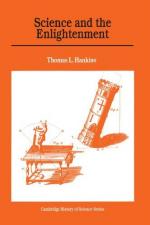
|
| Name: _________________________ | Period: ___________________ |
This quiz consists of 5 multiple choice and 5 short answer questions through Chapter 4, Chemistry.
Multiple Choice Questions
1. What was the name of the problem of finding the shape of a surface of maximum area for a perimeter of given length as found in Chapter 2?
(a) Brachistachrone.
(b) Cycloid.
(c) Involute.
(d) Isoperimeters.
2. In Chapter 4, what is the name of the group of financiers who obtained from the French government the right to collect taxes?
(a) Tax lawyer.
(b) Personal tax assistant.
(c) Fixed sum.
(d) Tax farm.
3. According to the narrator in Chapter 1, what was the key to a correct method whose model was mathematics?
(a) Nature.
(b) Reason.
(c) Nuture.
(d) Geometry.
4. What area of study in the Middle Ages had been the domain of those truths that could be found through the use of reason alone without the revelation of the Bible?
(a) Natural theology.
(b) Physiology.
(c) Mied mathematics.
(d) Psychology.
5. In Chapter 3, ________ and ________ were both led to the problem of specific heat by the discovery that a great deal of heat was required to melt ice, even though its temperature remained at the melting point.
(a) Galvani / Volta.
(b) Black / Wilcke.
(c) Wilcke / Robison.
(d) Black / Coulomb.
Short Answer Questions
1. The concept of a ________ was a necessary step in the process of quantification, according to the narrator in Chapter 3.
2. The conversion of 'sGravesande confused the ideological debate because he was one of the leading supporters of ________ philosophy on the Continent.
3. The narrator reveals that Lavoisier heated water gently for ________days in a "pelican," an apparatus for constant distillation in which the water evaporates, then condenses, and finally runs back to be evaporated again.
4. By what name did natural philosophers want to be known as, according to the narrator in Chapter 1?
5. Who was the first person to identify a new air different from common atmospheric air,, in Chapter 4?
|
This section contains 295 words (approx. 1 page at 300 words per page) |

|




